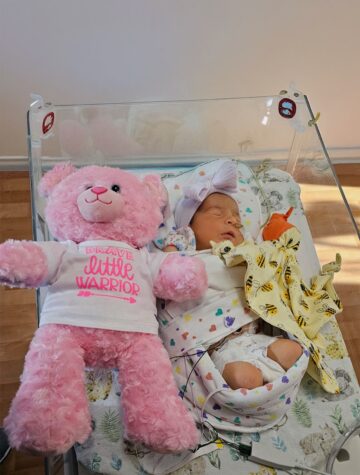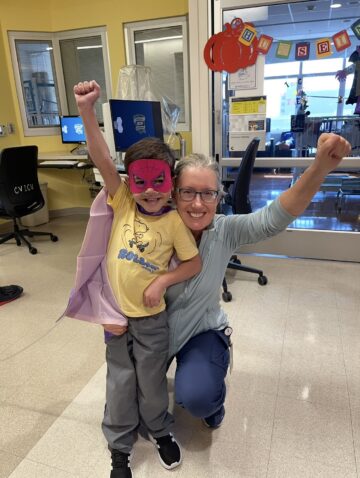Like most parents, when Erin and Ryan were pregnant with their first child, it was an exciting and precious time. However, for them, they knew this would be a high-risk process since Erin has Type 1 diabetes.
Erin was seen regularly at University of California, Irvine (UCI) Medical Center for checkups on her and the baby because of her T1D. At week 20, Erin went in for an anatomy scan of the baby. This is when the baby is examined via ultrasound to make sure everything is growing and developing as it should. During an anatomy scan, clinicians also pay close attention to the baby’s heart.
Doctors noticed a few issues with the baby’s heart. Erin and Ryan were referred to Dr. Nafiz Kiciman, a pediatric cardiologist at CHOC who specializes in critically ill newborns.
Dr. Kiciman was able to confirm the unborn baby’s diagnosis: Tetralogy of Fallot (TOF) with pulmonary atresia (PA).
“I was very emotional hearing that my sweet little baby girl had been diagnosed with a major heart condition and would need multiple surgeries throughout her life,” says Erin. “I cried many tears thinking about a small baby going through so much.”
TOF is a congenital heart defect made up of four abnormalities. Since Quinn has a severe form that includes pulmonary atresia, she has five abnormalities.
These include:
- a hole in the wall that separates the lower right and left heart chambers
- her aorta had been moved to the right
- abnormal pulmonary arteries
- a thickened right ventricle, and
- no pulmonary valve to connect the right ventricle to the lungs.
Currently, the only treatment is pediatric open-heart surgery.
“Knowing surgery was going to be in the future was not easy, but I was also the only one who could feel her movements, and I knew she was strong,” says Erin.
Quinn’s journey in a brand-new world
Quinn was born on April 11, 2019 at UCI Medical Center, weighing 4 pounds and 4 ounces. Doctors determined she needed a higher level of care due to her heart condition, so when Quinn was four days old, she was transferred to CHOC Hospital’s neonatal intensive care unit (NICU).
“We had so many emotions as we left UCI without our baby and headed to CHOC,” Erin says. “We were thankful that Dr. Kiciman would be one of the many cardiologists that would be caring for Quinn. We met the NICU nurses and doctors, which made us feel even more comfortable.”
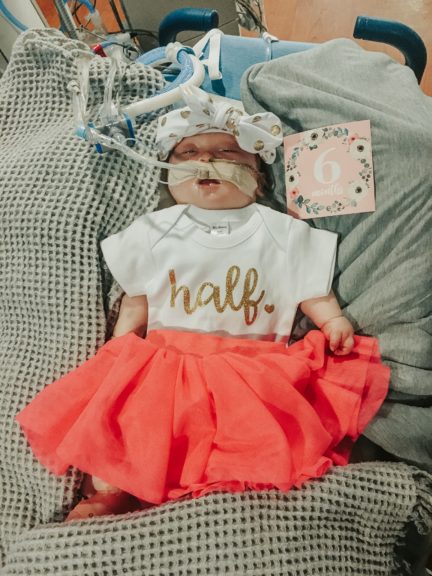
While in the NICU, Quinn’s job was to grow big enough to undergo her first heart surgery. As for Erin and Ryan, they were navigating learning how to be first time parents, with the added complexity of doing so for a child in critical care.
“We relied on the nurses and doctors to help us navigate through the first few weeks,” Erin says. “We had to learn how to change her diaper while she had various cords attached to her and hold her while she was connected to oxygen machines. We were thrown into parenthood really fast.”
Quinn gained 1 pound and 10 ounces in a month but she still wasn’t ready or big enough for a full heart repair. However, something needed be done to help the blood flow to her lungs. Dr. Richard Gates, director of cardiothoracic surgery at CHOC, performed a shunt operation to place a small tube between a body artery and the pulmonary artery.
After surgery, Quinn was moved to the cardiovascular intensive care unit (CVICU) at CHOC for six weeks. In the CVICU, she worked on breathing on her own and feeding with the help of her care team and a speech language pathologist (SLP).
SLPs work across CHOC’s healthcare system with a variety of patients. In Quinn’s case, they taught her skills and exercises to help her explore the movement and muscles of their mouths.
In the time Quinn worked with her SLP, she quickly developed good sucking skills, while still working on refining her swallowing skills. While she perfected these skills, Quinn’s medical team decided she would benefit from a gastrostomy tube, — or G-tube— a feeding tube placed through her abdomen so she could receive nutrition directly to her stomach.
The interstage
After 77 days at CHOC, Quinn finally got to go home through the cardiac high-risk interstage program.
This new home-monitoring program at CHOC was designed for babies with complex congenital heart disease. Families go home with a scale and pulse oximeter to record heartrate, pulse, weight and feeding. That information is then reported regularly to the child’s care team. The goal of this program is to provide families with an easy and reliable connection to their care team during the “interstage period”— the time between a baby’s first and second surgery.
“The interstage period is a critical time during which babies with certain heart conditions, like Quinn, are very fragile,” says Elizabeth Miller, a nurse practitioner dedicated to the interstage program. “Monitoring and evaluating the baby’s information on a regular basis has been proven to help early recognition of a possible serious problem and save lives.”
Future plans for the program include sending families home with iPads and a unique app that will allow families to record data, capture video and photos, and send message to care team members.
With the program, Quinn was also scheduled for biweekly visits to her cardiologists and a standard cardiac catheterization to evaluate her heart and plan for her future heart repair. During this procedure, Quinn’s heart team discovered a narrowing in a valve that needed emergent care.
The next morning, Quinn underwent surgery with Dr. Gates. This complete heart repair would close the hole in her heart and widen her pulmonary arteries.
Road to recovery
Quinn’s recovery was tough and long. Her lungs were fragile, and she also developed necrotizing enterocolitis a serious intestinal disease common among premature babies.
Since Quinn was fragile during her recovery, Erin and Ryan were unable to hold her for the first month after surgery.
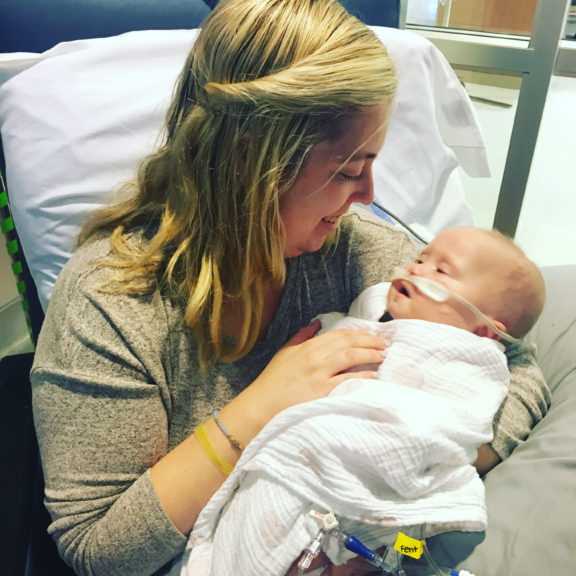
Though this time, Quinn’s family found comfort in being back at a place they already knew.
“We felt so comfortable going back to our ‘home’ in the CVICU,” Erin says. “The nurses, doctors and staff remembered our family and Quinn. During our time, Quinn showed that they will never forget her and got the nickname PQ, short for Princess Quinn.”
For the next seven weeks, Quinn made “baby toes in the right direction” — a saying from Erin on Quinn’s small but mighty progress, and a nod to her tiny feet. She developed a strong and feisty personality, and she wanted to do things in her own way and on her own terms. It was because of this that Erin and Ryan knew Quinn could get through anything.
Quinn today
Quinn is now at home and Erin and Ryan are soaking in the time they get to spend learning about their baby girl in a home setting. They have also seen her develop a love for watching sports—especially hockey, baseball and football.
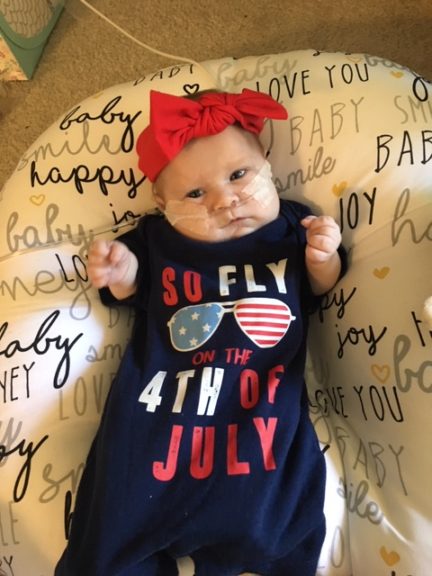
Quinn is regularly followed by a variety of specialties at CHOC including cardiology, gastroenterology, pulmonology and hematology at CHOC. She will also need minor procedures, and another open-heart surgery when she’s older to replace the valve.
“Her journey is not over yet, but we’re equipped to handle what comes next for her medically,” Elizabeth says. “Quinn’s whole team here at CHOC has loved seeing her grow into the baby she was always meant to be.”
Get more expert health advice delivered to your inbox monthly by subscribing to the KidsHealth newsletter here.
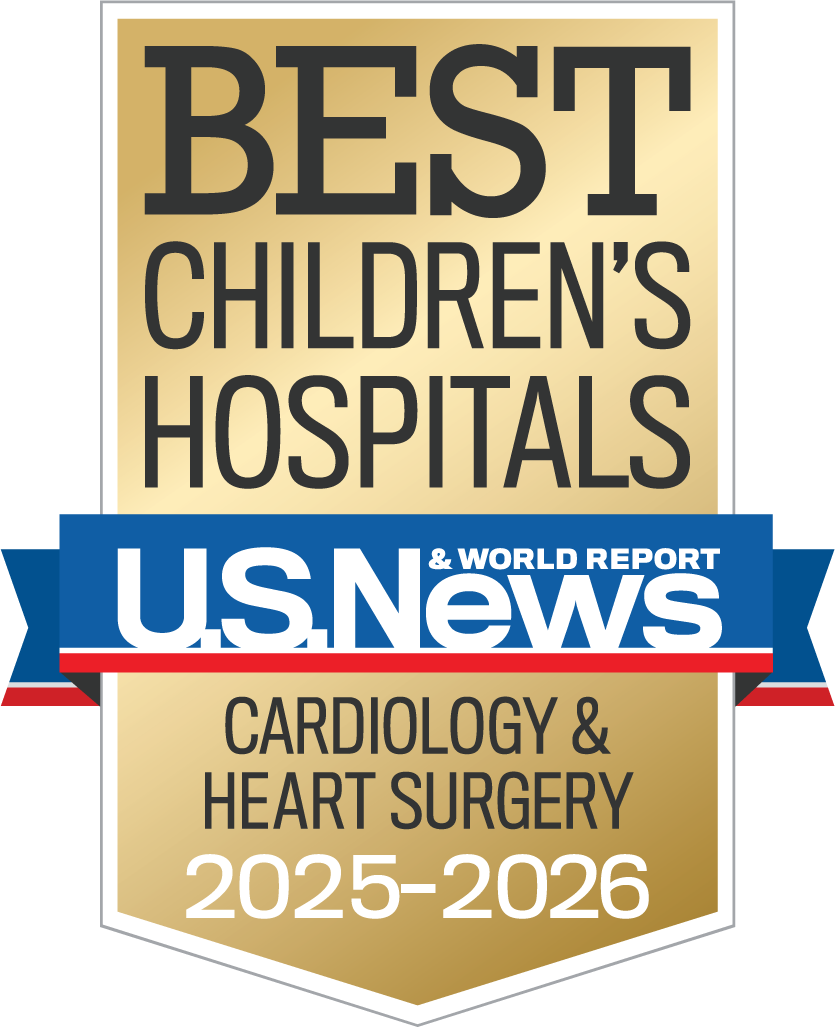
Learn more about CHOC’s Heart Institute
CHOC and UCLA Health together have been ranked among the top children’s hospitals in the nation for Cardiology & Heart Surgery by U.S. News & World Report.

